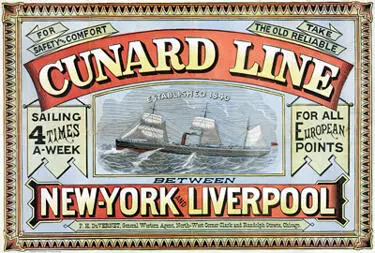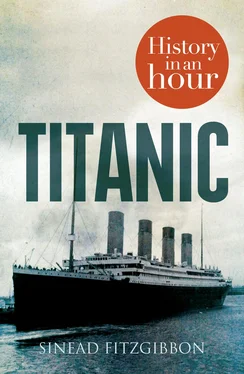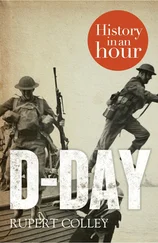TITANIC
History in an Hour
Sinead Fitzgibbon
About History in an Hour Contents Cover Title Page About History in an Hour Introduction The Battle for the North Atlantic RMS Titanic : A Ship Unlike Any Other The Maiden Voyage An Inauspicious Beginning? The Quest for Speed Ice Warnings A Catastrophic Error of Judgement Damage Reports To the Lifeboats Save Our Souls! Death by Drowning? The Carpathia Aftermath: Inquiries & Legacy Mirror Images Appendix 1: Key Figures Appendix 2: Timeline of the Titanic Disaster Copyright Got Another Hour? About the Publisher
History in an Hour is a series of ebooks to help the reader learn the basic facts of a given subject area. Everything you need to know is presented in a straightforward narrative and in chronological order. No embedded links to divert your attention, nor a daunting book of 600 pages with a 35-page introduction. Just straight in, to the point, sixty minutes, done. Then, having absorbed the basics, you may feel inspired to explore further.
Give yourself sixty minutes and see what you can learn . . .
To find out more visit http://historyinanhour.comor follow us on twitter: http://twitter.com/historyinanhour
Contents
Cover
Title Page TITANIC History in an Hour Sinead Fitzgibbon
About History in an Hour
Introduction
The Battle for the North Atlantic
RMS Titanic : A Ship Unlike Any Other
The Maiden Voyage
An Inauspicious Beginning?
The Quest for Speed
Ice Warnings
A Catastrophic Error of Judgement
Damage Reports
To the Lifeboats
Save Our Souls!
Death by Drowning?
The Carpathia
Aftermath: Inquiries & Legacy
Mirror Images
Appendix 1: Key Figures
Appendix 2: Timeline of the Titanic Disaster
Copyright
Got Another Hour?
About the Publisher Конец ознакомительного фрагмента. Текст предоставлен ООО «ЛитРес». Прочитайте эту книгу целиком, купив полную легальную версию на ЛитРес. Безопасно оплатить книгу можно банковской картой Visa, MasterCard, Maestro, со счета мобильного телефона, с платежного терминала, в салоне МТС или Связной, через PayPal, WebMoney, Яндекс.Деньги, QIWI Кошелек, бонусными картами или другим удобным Вам способом.
Introduction Introduction The Battle for the North Atlantic RMS Titanic : A Ship Unlike Any Other The Maiden Voyage An Inauspicious Beginning? The Quest for Speed Ice Warnings A Catastrophic Error of Judgement Damage Reports To the Lifeboats Save Our Souls! Death by Drowning? The Carpathia Aftermath: Inquiries & Legacy Mirror Images Appendix 1: Key Figures Appendix 2: Timeline of the Titanic Disaster Copyright Got Another Hour? About the Publisher Конец ознакомительного фрагмента. Текст предоставлен ООО «ЛитРес». Прочитайте эту книгу целиком, купив полную легальную версию на ЛитРес. Безопасно оплатить книгу можно банковской картой Visa, MasterCard, Maestro, со счета мобильного телефона, с платежного терминала, в салоне МТС или Связной, через PayPal, WebMoney, Яндекс.Деньги, QIWI Кошелек, бонусными картами или другим удобным Вам способом.
On Wednesday 10 April 1912, RMS Titanic embarked on her maiden voyage, carrying over 2,000 passengers, as she set sail from the port of Southampton, England, bound for New York City.
RMS Titanic was widely acknowledged to be the jewel in the crown of its owners, the White Star Line. The newly built liner was the product of the very latest advances in nautical engineering and a major achievement for its creators, Belfast shipbuilders, Harland & Wolff. It was the largest floating vessel the world had ever seen and, endowed as it was with every conceivable luxury, it was also the most opulent.
It is hardly surprising then, that the much-publicized launch of this gigantic vessel attracted intense media interest. On both sides of the Atlantic, Titanic was making headlines in national newspapers, while the cream of British and American high society, eager to bask in Titanic ’s reflected glory, were lining up to book a passage on her maiden voyage.
Much of the excitement which accompanied Titanic ’s unveiling was based on the expectation that it would smash the transatlantic speed record, previously held by the Mauretania , which was owned by White Star’s arch-rivals, the Cunard Line. This quest for speed did indeed see RMS Titanic sailing into the pages of history but, tragically, for all the wrong reasons.
Sadly, for her approximately 2,000 awe-struck passengers and crew, Titanic was not destined to reach its final destination. Four days into the week-long voyage, this triumph of human ingenuity and engineering struck a large iceberg in the middle of the Atlantic Ocean. In just over two hours, she had descended to her watery grave on the ocean floor, with the loss of over 1,500 lives.
This is the story of how, thanks in large part to a calamitous chain of unfortunate events combined with a litany of human errors, the maiden voyage of a supposedly ‘unsinkable’ ship became one of the worst maritime disasters in peacetime history.
This is the story of RMS Titanic.
The Battle for the North Atlantic The Battle for the North Atlantic RMS Titanic : A Ship Unlike Any Other The Maiden Voyage An Inauspicious Beginning? The Quest for Speed Ice Warnings A Catastrophic Error of Judgement Damage Reports To the Lifeboats Save Our Souls! Death by Drowning? The Carpathia Aftermath: Inquiries & Legacy Mirror Images Appendix 1: Key Figures Appendix 2: Timeline of the Titanic Disaster Copyright Got Another Hour? About the Publisher Конец ознакомительного фрагмента. Текст предоставлен ООО «ЛитРес». Прочитайте эту книгу целиком, купив полную легальную версию на ЛитРес. Безопасно оплатить книгу можно банковской картой Visa, MasterCard, Maestro, со счета мобильного телефона, с платежного терминала, в салоне МТС или Связной, через PayPal, WebMoney, Яндекс.Деньги, QIWI Кошелек, бонусными картами или другим удобным Вам способом.
In the latter half of the nineteenth century, transatlantic sea travel was fast becoming a lucrative business. Passenger numbers were on the increase, thanks in large part to the hordes of émigrés leaving Europe in search of a better life in America, while steamships also profited by ferrying mail between the US and Britain.
Since its owner, Samuel Cunard, was awarded the first British transatlantic mail contract in 1839, the Cunard Line had operated a near-monopoly on this highly profitable route.

Cunard Line Poster, 1875
This all changed, however, when Thomas Ismay purchased the White Star Line in 1869. Operating in direct competition with the Cunard Line, the White Star Line’s entry into the transatlantic market marked the beginning of a decade-long battle between the two companies as they vied for dominance of the Atlantic Ocean. To complicate matters, they were also fighting off stiff competition from emergent shipping firms from Germany. The stakes could not have been higher.
Читать дальше













